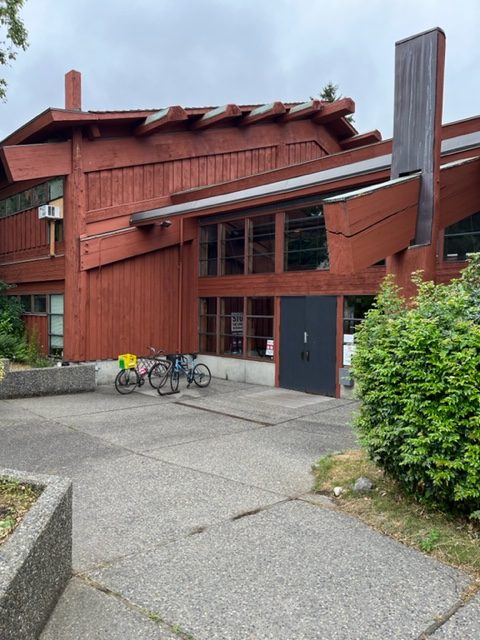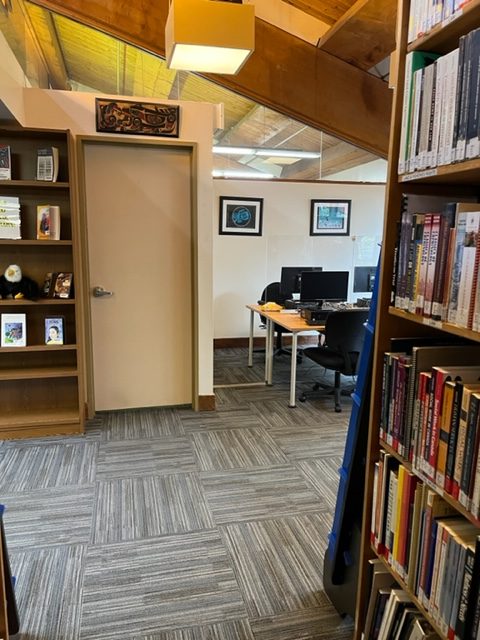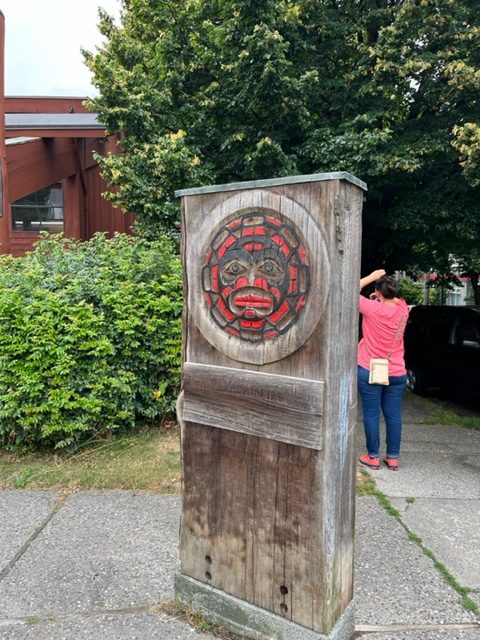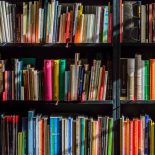Academic Library Visit

I visited two libraries while on vacation in Vancouver, Canada. Before heading to the north west, I researched libraries that I would like to visit. The first of these visits was to Native Education College (NEC). This college is located at 285 East 5th Avenue Vancouver, situated on a hill overlooking the city and athlete’s village from the Vancouver Olympics 2010 (now housing for the city’s residents). The college is a private college, similar to a community college, preparing students to transfer to degree programs. They are recognized by the Private Training Institutions Branch of the Ministry of Advanced Education to provide certifications and diplomas. NEC’s mission is to provide a culturally appropriate and supportive learning environment for Indigenous learners, within available resources. Non-Indigenous learners are welcome (Native Education College, 2022). https://www.necvancouver.org/about-us

The library for NEC is located on the second floor of the building that is built in the native longhouse tradition. The library is named The Grace Mirehouse Memorial Library, after a native woman who dedicated her life to the education of her people. The library is a very small library that houses books all focused on the First Nations history, art, carving, food, poetry, graphic novels, biographies, physcology, residential schools, therapy, education, gender, spirituality, racism, politics and more. When I walked into the building, there were study sessions and tutoring happening at the tables.
The college is small, 180 students enrolled last year, graduating 100 students this spring. There is one librarian, when he came to the college eight years ago, he said he kept the Dewey Decimal Classification system in place despite the limitations of the system. It is interesting to me that he has not tried to reclassify using the Library of Congress Classification, especially given the Dewey Decimal Classification system is based on European, American and Christian biases. Rubin R.E., Rubin R.G. (2020) p.340.
The library has 4 computers, a copier, internet access and 4 tables and chairs. Their online catalog was interactive and fun to explore. http://library.necvancouver.org/4DCGI/Gen_2002/web_Gen_2002_LoadProgButtons/Lang=En/Bookbag=T87SGGXJ0YV73T661

The library collection also had many indiginous movies and documentaries. Although the physical library is small, the students have many online and reciprocal accesses. The University of British Columbia offers any Aboriginal person a free library card, The Vancouver Community College and Emily Carr University share its library and online services with NEC students.
The library also offers online Indigenous language learning sites, resources and academic journals. The librarian teaches research skills one on one and in small groups.
I was very impressed with this little college’s library and program. After I visited I wondered if this was more of a specials library than an academic library. I thought long about this, and decided that even though it was small, the collection was very academic in nature and it was indeed a college. I plan to visit a larger academic library before I finish this program to compare and learn more!
Resources:
Native Education College. (2022). About us. (para. 3) https://www.necvancouver.org/about-us
Rubin R. E., Rubin R. G. (2020). Foundations of library and information science. (5th ed.) Neal-Schuman

Thank you for sharing this unique and amazing library. I think we often overlook smaller libraries, in this case smaller specialized school libraries.
I love that you mapped out and visited libraries while you were on vacation. I try to search out libraries while I am away but usually it is just a drive by. It is a goal to start making a point to at least walk thru a library when I am out of town. What a unique and rich history this library has. It looks like they try to keep historical artwork and pieces around for display and education.
Thank you for sharing your experience.